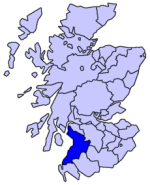
As part of our One Scotland look at the Lost World, written by Edinburgh author Arthur Conan Doyle, we will be taking aspects of this piece of work into a number of different subject areas.
Primarily we will be reading an abridged, differentiated version of the book courtesy of the UNESCO City of Literature 2009 – Edinburgh! Practising our reading skills will be an important part of this project.
In Science we will be looking at dinosaurs from a scientific point of view – investigating what scientists think they know about the lives of dinosaurs, where they lived, what they ate and how they perhaps disappeared from the planet. We will be looking at modern day survivors of the Jurassic era – how has the crocodile managed to hang around for so long, when other animals have gone?

In Gardening we will be finding out from the Botanic Gardens and other useful sources of information what sort of plants might have been growing when the dinosaurs roamed the planet. We can use this information to help us plan our own model of The Lost World. We want to make sure the greenery we use is appropriate to the time.
In Social Studies we will be looking more closely at the history of the dinosaur – the timelines some scientists have given to the various animals based on the fossilised remains that archeologists have found. We will become detectives in working out our own history of the dinosaur!
With Miss Strachan we will look more closely at the work of Arthur Conan Doyle – becoming detectives again, like his famous sleuth, Sherlock Holmes. We hope to visit some of the landmarks in Edinburgh where he was born, lived, studied or worked.
As part of our preparations for all of this work we have been undertaking research using books,experts, ICT and media broadcasts.
Mr McKay unwittingly became something of an “eye witness” for our pupils when he wandered into a history lesson this week. Asked by the children what he knew about dinosaurs, Mr McKay impressed us with tales of how dinosaurs lay and tend their eggs – explaining how baby dino gender is determined by egg temperature. Later on the same day the pupils could be heard innocently telling another member of staff that Mr McKay had been around with the dinosaurs…
We have sourced a number of fabulous items including the following link to a BBCi player programme first broadcast on February 19th. Please be aware there are time limits on accessing it. It would be fantastic if the children were to have the opportunity to watch this programme for themselves in the relaxation of their own homes. It is part of the Little Howard’s Big Questions series. The programme is called Could Dinosaurs Ever Come Back?
We hope that you all enjoy it.




